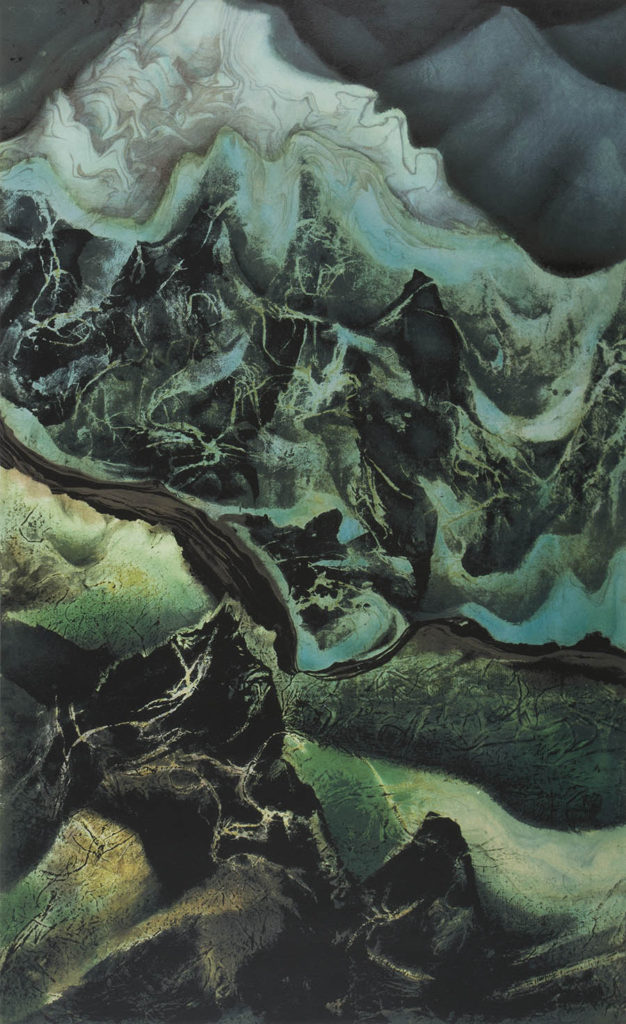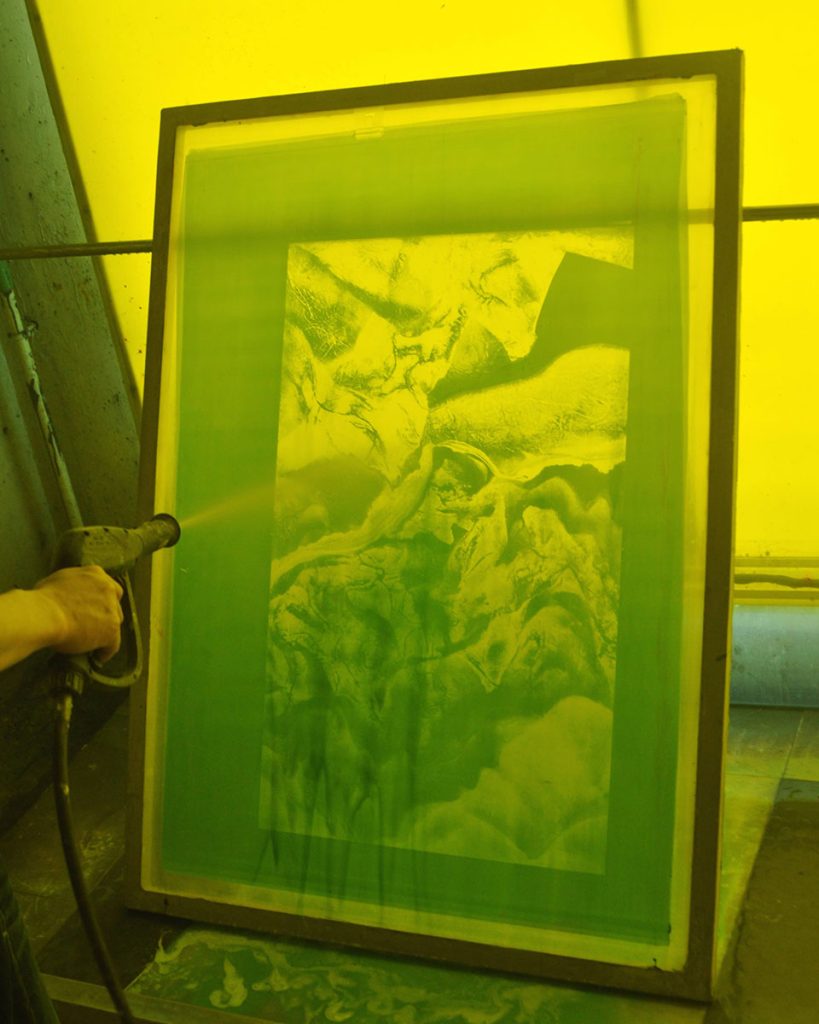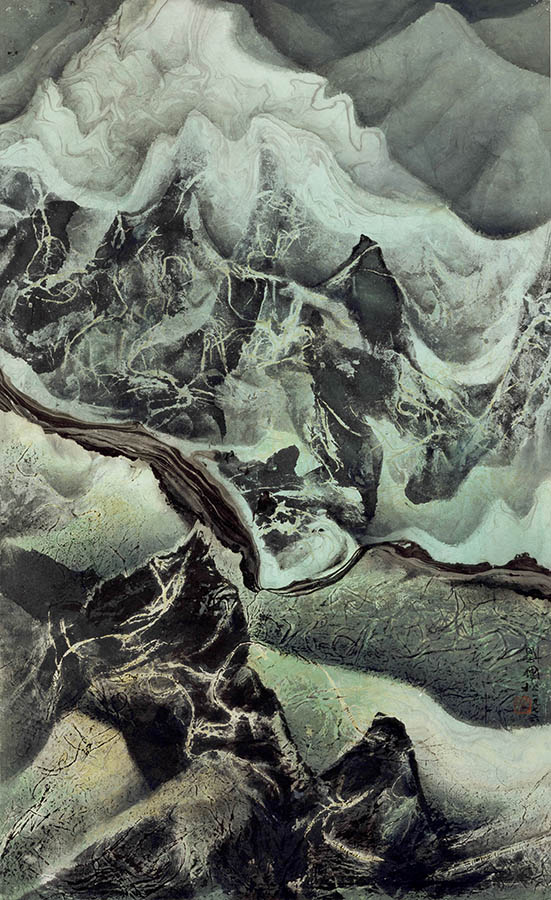The most critical aspect of silkscreen printmaking is the manual division of screens. The process involves dissecting the various colors of the original image into individual colors for each screen. As one screen permits only one color, complex colors require a high amount of screens. During printing, the colors of each screen are layered with each run, reassembling the colors together in forming the printed image. The ink for each color is manually mixed in order to produce the exact color required. The degree of manually skill involved demonstrates the value and craftsmanship of printmaking.
Due to the complexity of Floating Mountain Peak, creating the silkscreen print was a challenge, specifically in the division of screens. To overcome this challenge, the composition was split into manageable portions. The original composition is comprised of the upright format of traditional Chinese landscape painting, which has into three “distances:” the “level distance” or foreground, the “deep distance” or mid-ground, and the “high distance” or background. In the division of screens, the image was thus structured into three corresponding portions, with the frontal peak in the foreground, mountain ranges in the mid-ground, and silhouettes in the background. After many test runs, detail adjustments, and additions of extra screens, the finished product came to a total of fifty screens, marking a remarkable feat in silkscreen printmaking.
Artist: Liu Kuo-sung (Liu Guosong)
Based on Floating Mountain Peak, 1976
Medium: Silkscreen Print on Paper (50 Screens, 50 Colors, 50 Runs)
Image: 104 x 64 cm (41 x 25 1/8 in.)
Paper: Arches, 100% Cotton, 300 g/m2
Date: 2015
Editions of 100, AP10
Signed, numbered, dated, and stamped with a seal by the Artist
Literature: The Scripture of a Missionary of Modern Ink Painting II, Lofty Art & Culture, 2015
Frame: Sold separately
Out of Stock



Based On
Catalog Entry
The Scripture of a Missionary of Modern Ink Painting II
Floating Mountain Peak is a major work of Liu Kuo-sung’s “Water-rubbing” technique. “Water-rubbing” is an important component to Liu’s “revolution against the brush,” and a total rejection of the dominance of refined brushwork in traditional Chinese painting.
Liu Kuo-sung, Floating Mountain Peak, 1976 © The Liu Kuo-sung Archives
Related Prints
Etching Print on Paper
Out of Stock
Woodblock Print on Paper
Out of Stock
Etching Print on Paper
Out of Stock
Woodblock Print on Paper
Out of Stock
Lithograph Print on Paper
Out of Stock
Silkscreen Print on Paper
Out of Stock
Silkscreen Print on Paper
Out of Stock
Silkscreen Print on Paper
Out of Stock
Silkscreen Print on Paper
Out of Stock











